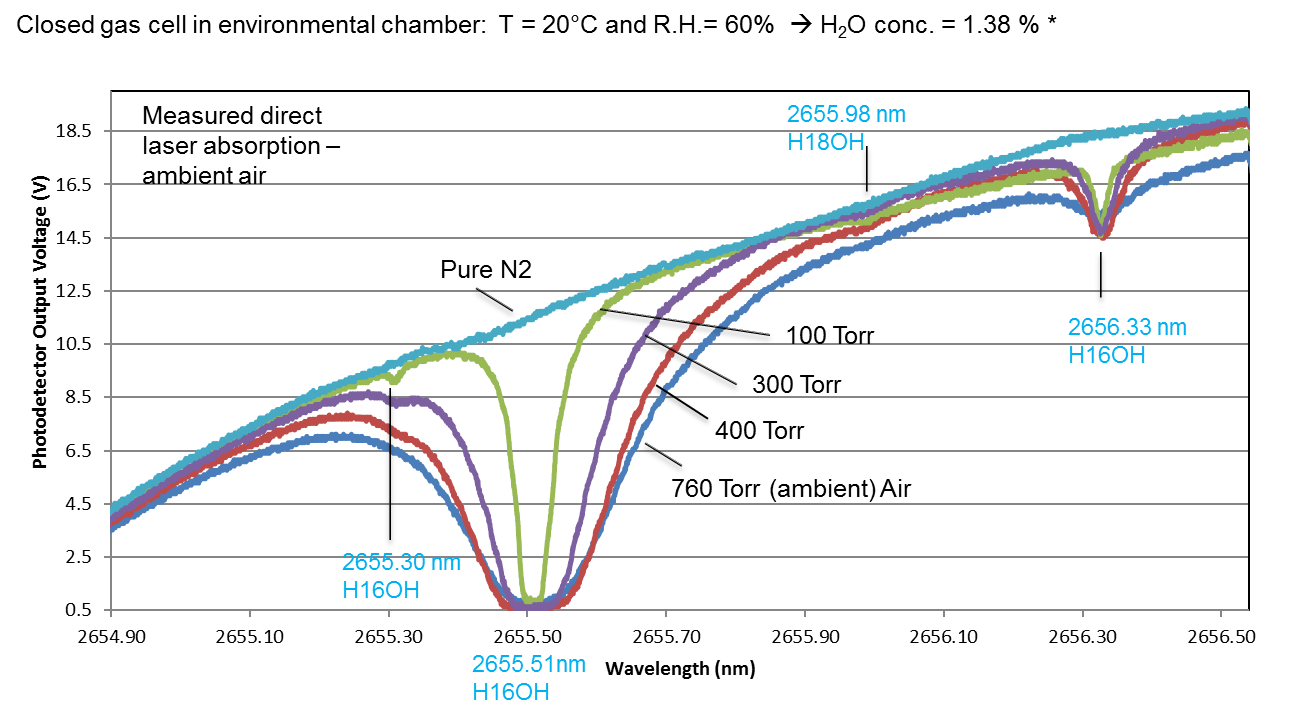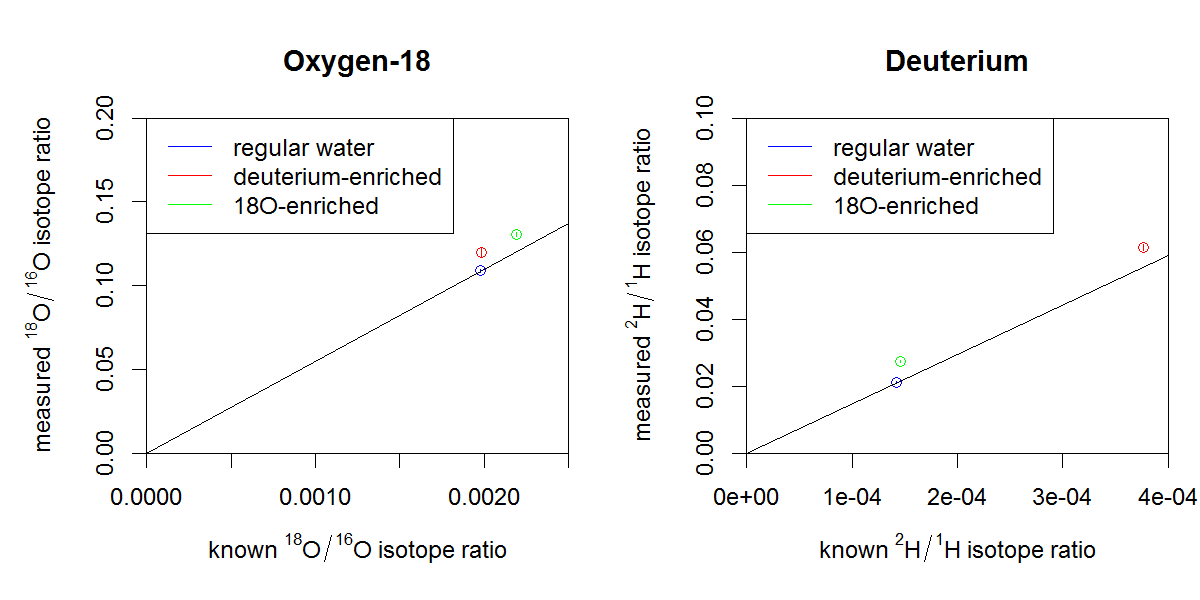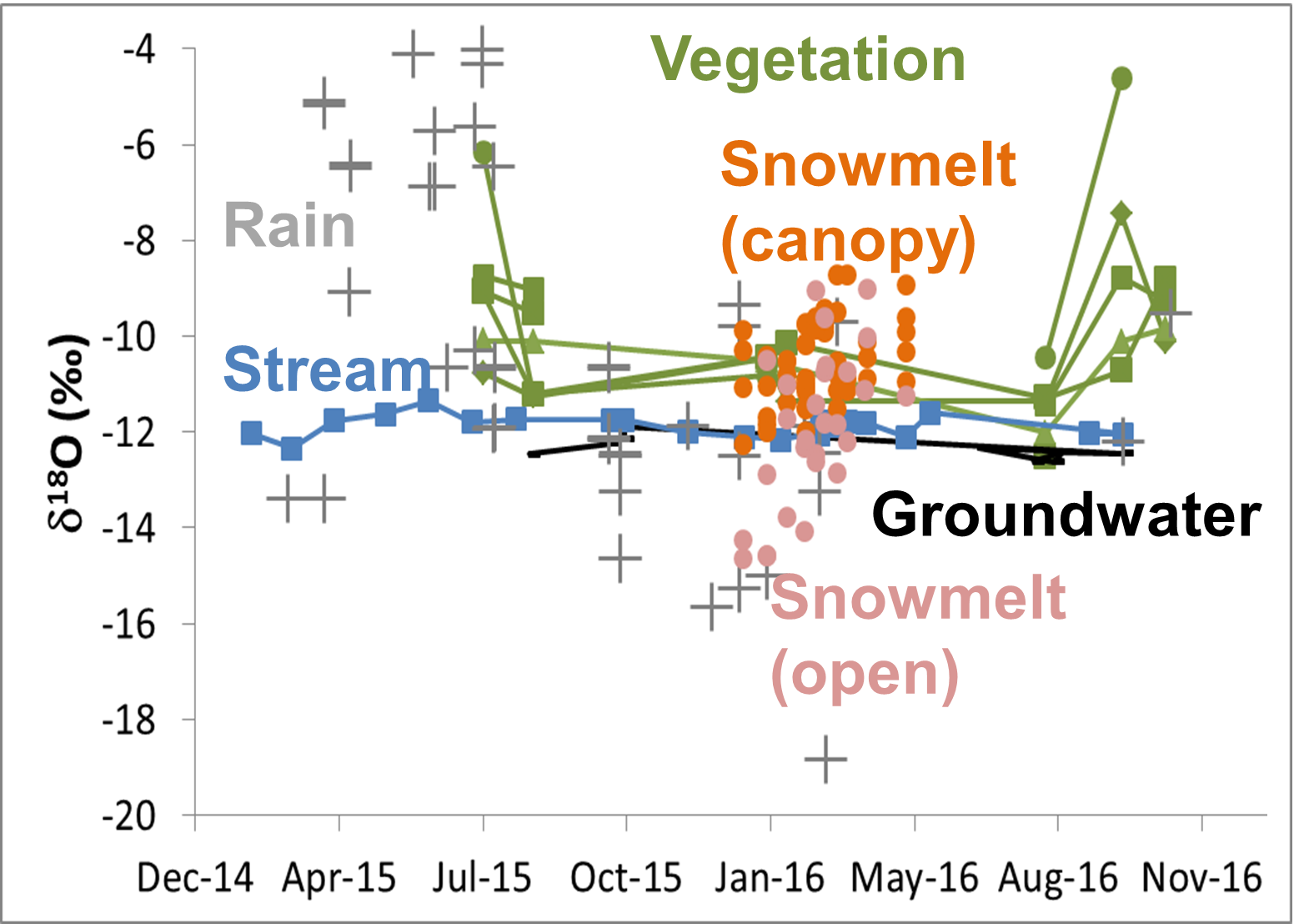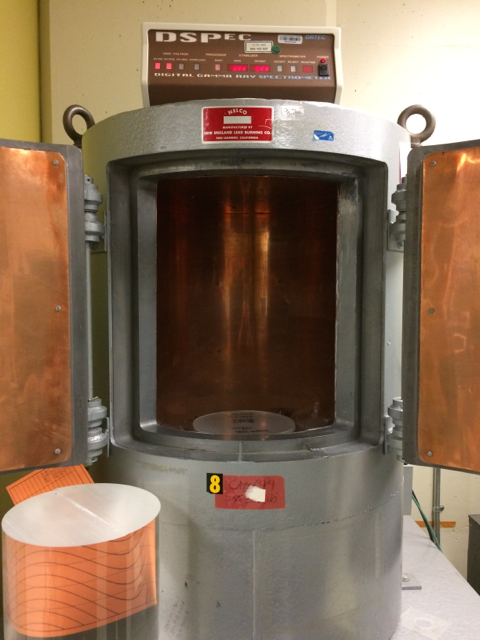Ate Visser (15-ERD-042)
Abstract
Stream flows represent a critical component of water security. The vulnerability of stream flows to droughts is dependent on strong dynamic interactions between precipitation, catchment storage, and water losses to evaporation and plant transpiration. The goal of this research was to integrate multi-isotope fingerprints with a coupled hydrology and land surface model at the Southern Sierra Critical Zone Observatory. We developed an optical-fiber-coupled, palm-size, laser absorption spectroscopy multipass gas cell for the detection of water vapor isotopologues. We measured seasonal and forest canopy effects on isotopic fingerprints in precipitation that are essential for understanding dynamic links between forest evapotranspiration and subsurface storage. While a headwater stream was determined to be dominated by snowmelt, summer precipitation was found to be a significant source of water for vegetation in the catchment during a severe drought. Dynamic storage selection functions, describing how the critical zone selects water in storage for stream flow or evapotranspiration, were constrained by a novel combination of cosmogenic radioactive and stable isotopes: tritium, sodium-22, sulfur-35, and oxygen-18. For this, we developed an analytical capability for sodium-22 as a hydrological tracer. We found that storage selection functions that vary with stream flow rate were better able to reproduce tritium concentration in stream flow than functions that were constant in time. The Southern Sierra critical zone has a strong preference to discharge the oldest water in storage under dry conditions, but only a slight preference for younger water under wet conditions. A deep, unsaturated zone resulted in the absence of the youngest water in stream flow, confirmed by the absence of short-lived isotopes. The storage selection behavior constrained subsurface water storage to 3–3.5 m of water in agreement with geophysical estimates. Subsurface storage provided significant inter-annual carryover and played an important role in sustaining meadow ecosystems through droughts.
Background and Research Objectives
During periods of drought, the ability of plants to continue to transpire further reduces the amount of water available for stream flow. The principal question in hydrology is how the critical zone selects water from storage to discharge as either stream flow or evapotranspiration. Isotopic tracers are ideal tools to interrogate the behavior of the critical zone architecture and plant water strategies. Our multidisciplinary approach involved applying a novel set of isotopic tracers to constrain fluxes and sources of evapotranspiration and directly quantify the effective catchment storage.
Our research focused on integrating multi-isotope fingerprints with a coupled hydrology and a ParFlow and Common Land Model (CLM) at the Southern Sierra Critical Zone Observatory (SSCZO). Critical zone observatories (CZO) are highly instrumented National Science Foundation-funded field sites across the U.S. with widely different geology, hydrology, vegetation, and climate. Researchers at these sites study critical physical, chemical, and biological processes at the Earth's surface. The SSCZO transects a set of field sites in the Kings River watershed, and is managed by the Sierra Nevada Research Institute at the University of California (UC), Merced. Our specific objectives at the SSCZO were to: (1) assess the source and residence time of water lost by evaporation and plant transpiration using high-frequency in situ measurements of water isotopologues with a miniature tunable diode laser (mini-TDL) in conjunction with existing flux towers; (2) constrain the effective storage capacity of selected catchments by deriving the age distribution of water leaving the catchment as stream flow using a combination of stable deuterium isotopes (2H and 18O), and cosmogenic isotopes (3H, 22Na, 35S); and (3) integrate the knowledge derived from isotopic fingerprinting into the ParFlow+CLM model, using isotopic measurements as calibration targets, to investigate drought vulnerability indicators.
This project benefited from a collaboration with UC Merced and the Colorado School of Mines (CSM). UC Merced provided key knowledge of the SSCZO and access to collect samples and conduct field investigations. CSM provided expertise in ParFlow model development. The close collaboration with academic institutions resulted in a truly integrated research effort. Conducting the research at the SSCZO led to new interactions with university researchers at other CZOs across the U.S.
Scientific Approach and Accomplishments
Analysis of Oxygen and Hydrogen Isotopic Ratios of Water Vapor Using a Fiber-Coupled Laser Absorption Spectroscopy Multi-Pass Cell
Direct and continuous in situ measurements of water vapor isotopes using novel laser spectroscopy techniques enabled major progress in partitioning evapotranspiration leading to a better implementation of evapotranspiration in land surface models. Differences in water isotopologues (2H16O1H, 1H18O1H and 1H16O1H) between precipitation, tree xylem water, and atmospheric water vapor changed in predictable ways with variation in plant water use strategy.
We developed an optical fiber-coupled, palm-size, laser absorption spectroscopy multipass gas cell for the detection of water isotopologues. Two techniques, direct absorption and wavelength modulation spectroscopy (WMS), were demonstrated for this application. Direct absorption has the advantage of being very simple to implement and requires the least instrumentation, while WMS has better sensitivity that can be important when detecting the less naturally abundant minor isotopologues 1H18O1H and 2H16O1H, 0.2% and 0.03%, respectively, especially at low humidity. Our approach led to vastly improved sensor portability and reduced need for optical alignment, making it much more suitable for direct field deployment, especially for applications that require real-time atmospheric monitoring in small or hard-to-access locations.
We procured a custom-made tunable continuous-wave diode laser from Toptica (model DL100) with a tuning range covering the optimal absorption lines, wavelengths near 2656 nm, of the water vapor isotopologues. The multipass, optical gas cell was custom made by the Fraunhofer Institute for Physical Measurement (IPM). Its size was only 11.5 × 6 × 4 cm, and was based on the White cell design composed of three mirrors in the cell. The laser light was launched through a Thorlabs 100-µm core diameter InF3 infrared (IR) multimode fiber. The output laser light was coupled through a sapphire window, and collected by a Thorlabs PbS transimpedance amplified photoconductive IR detector. Water vapor was introduced into the cell at controlled flow rate and concentration through a vapor delivery system. Nitrogen was used as the carrier gas flowing through a membrane tube immersed in liquid water.
For direct absorption detection, the photodetector output was directly displayed on a Tektronix oscilloscope triggered by the built-in laser driver electronics function generator. For WMS, the laser injection current was externally modulated by a function generator with a frequency of 500 Hz and p-p amplitude of 1 V. The WMS signal was obtained by a lock-in amplifier (Stanford Research System SR865).
Figure 1 shows the direct absorption spectra of the gas cell for water vapor with natural isotopic abundance at various pressures. Further calibration of the gas cell was performed at a pressure of 14 Torr. The isotopologue peak heights of absorption spectra were compared for vapor of deionized water (18O/16O = 0.001981, 2H/1H = 0.0001422), 18O-enriched water (18O/16O = 0.002190, d18O = +92.16%), and deuterium-enriched water (2H/1H = 0.0003760, d2H = +1414%). Initial results confirmed the ability of the laser sensor to identify the isotopically enriched vapors (see Figure 2). Technical challenges in the development of an accurate and reliable miniature tunable diode laser (mini-TDL) system prevented field deployment. Instead, samples of groundwater, soil moisture, and internal plant water were collected and analyzed to provide information about the isotopic signatures of the water pools where the fluxes of water vapor originated and provided key results on plant water strategies.
Isotopic Investigation of Plant Water Strategies
We found that a volume-weighted characterization of the stable oxygen and hydrogen isotopes in precipitation was essential for surface and groundwater hydrology in the Sierra Nevada due to its Mediterranean climate. Measuring seasonal and forest canopy effects on precipitation inputs was essential for understanding dynamic links between forest evapotranspiration and subsurface storage. Winter snowmelt contributed the most significant volume of water to the Sierra Nevada. While stream flow was determined to be dominated by snowmelt, summer precipitation was found to be a significant source of water for vegetation in the catchment during a severe drought. Vegetation changed sources—summer precipitation, snowmelt under the canopy, snowmelt in open areas, and deeply stored water—with availability (see Figure 3). This emphasized the importance of measuring precipitation season by season for ecohydrological studies. Stable isotope signatures were used to understand runoff generation and links between evapotranspiration and storage from the scale of the SSCZO to the scale of the Sierra Nevada as a whole.
Analysis of Air Mass Trajectories to Explain Observed Variability of Tritium in Precipitation
Understanding the behavior of 3H, a radioactive isotope of hydrogen, in the environment was important to evaluate the exposure risk of anthropogenic releases and for its application as a tracer in hydrology and oceanography. To understand and predict the variability of 3H in precipitation, Hybrid Single Particle Lagrangian Integrated Trajectory Model air mass trajectories were analyzed for 16 aggregate precipitation samples collected over a two-year period at irregular intervals at a research site located at 2,000 m elevation in the southern Sierra Nevada. Attributing the variation in 3H to specific source areas confirmed the hypothesis that higher latitude or inland sources bring higher 3H levels in precipitation than precipitation originating in the lower latitude Pacific Ocean. In this case, the source of precipitation accounted for 79% of the variation observed in 3H concentrations. Air-mass trajectory analysis is a promising tool for improving the predictions of 3H in precipitation at unmonitored locations and thoroughly understanding the processes controlling transport of 3H in the environment.
Development of the Analytical Capability for Sodium-22 as a Hydrological Tracer
22Na is a lesser-known cosmogenic isotope with a 2.6-yr half-life produced in the upper atmosphere by spallation of 40Ar (Rödel 1965; Lal et al. 1979). A limited number of studies have demonstrated its potential as a hydrological tracer. The analytical requirements (Kaste et al. 2016; Sakaguchi et al. 2003; Zhang et al. 2011; Zhang et al. 2014) have so far been prohibitive of widespread application in hydrology. The very low abundance of 22Na in the environment required collecting large volume water samples and concentrating sodium into a 4-L Marinelli beaker for low-level gamma spectroscopy. Up to 2,000 L of water was pumped through housing with a resin column containing 2 kg of Amberlite cation exchange resin in the field. Four liters of 3M HCl were passed through the column to elute all cations in the laboratory. The eluent was analyzed by gamma spectroscopy (see Figure 4).
The 22Na at 1274.5-keV activity in the 4-L concentrated samples was determined at the Low Level Counting Facility on the Big 8, a large (180% efficiency), coaxial high-purity germanium (HPGe) crystal with a 0.5 keV resolution and less than 3 × 10-3 counts per second (see Figure 5). To achieve enough counts above background, samples were counted for seven days. The counting efficiency was determined by measuring a 22Na standard with a known activity at 14 Bq in the same geometry and matrix, 3M HCl in a 4-L Marinelli beaker, as the sample.
Figure 5. Big 8 gamma spectrometer sample chamber loaded with 4-L Marinelli beaker on detector.
Unraveling the Dynamic Hydrochronology and Storage Selection of the Southern Sierra Critical Zone
The principal question in hydrology is how the critical zone selects water from storage to discharge as either stream flow or evapotranspiration. To reduce the infinite complexity of all hydrological processes of storage selection, the question can be posed as a probability of a water parcel inside the catchment leaving the catchment as either stream flow or evapotranspiration at a certain time. In that context, the question becomes which property or characteristic of the water parcel is predictive of the probability to exit the catchment. Is it its position in the landscape such as distance to the stream, the travel time of the water parcel within the catchment, that is, the time since the parcel entered the catchment as precipitation or snow melt, or chemical status (Kim et al. 2017; Liu et al. 2013; Druhan et al. 2017)? In our study, we focused on storage selection based on water age, specifically age-ranked water storage.
Dynamic storage selection functions were constrained by a novel combination of cosmogenic radioactive and stable isotopes: 3H, 22Na, 35S, and 18O. We found that storage selection functions that vary with stream flow rate were better able to reproduce 3H concentration in stream flow than functions that were constant in time. The SSCZO had a strong preference to discharge the oldest water in storage under dry conditions, but only a slight preference for younger water under wet conditions. A deep unsaturated zone results in the absence of the youngest water, confirmed by the absence of short-lived isotopes.
The storage selection function was defined by parameters aQ (preference of stream flow for young water under wet conditions), bQ (preference of stream flow for old water under dry conditions), aET (preference of evapotranspiration for young water), and S (average total water storage). Parameters describing the storage selection functions were highly correlated and could only be effectively constrained by including the 18O as an objective. A bias of 18O in stream water towards winter precipitation indicated a preference of vegetation to transpire the youngest summer precipitation, emphasizing the importance on investigating both stream flow and evapotranspiration fluxes.
The storage selection behavior contained information about the architecture of the catchment in a number of ways. The storage parameter S was constrained to 3–3.5 m of water. Geophysical estimates of storage at the SSCZO were approximately 5 m. While neither estimate was precise, storage provided significant interannual carryover and could possibly sustain meadows through droughts. The thickness of the weathered bedrock and the subsurface storage of water was the combined effect of the position of the CZO on the edge of a tread in the stepped terrain of the Southern Sierras and the bedrock-controlled landscape evolution. Hydrochronological constraints on subsurface storage provided landscape-integrated metrics of the critical zone architecture.
Impact on Mission
This project supports Livermore's chemical and isotopic science and technology core competencies through developing new isotopic capabilities for 22Na by low-level gamma counting and water vapor isotopologues from laser spectroscopy. This research aligned Livermore with evolving emphasis on terrestrial aquatic interfaces within DOE Office of Science and watershed science initiatives within the Subsurface Biogeochemical Research program.
Conclusion
Results have helped initiate discussions with the California Department of Water Resources and the Water Quality Control Board for implementation of research findings in the context of the California Sustainable Groundwater Management Act. The mini-TDL technology will be protected by a record of invention with options to seek industry collaborations for further development. The UC Merced collaboration will continue through a small grant for continued analyses of water samples from the SSCZO and across California. To continue this research, Livermore, four UC campuses, and Lawrence Berkeley National Laboratory recently received a prestigious UC Laboratory Fees grant to study the impact of climate change on California’s water resources.
References
Druhan, J. L., et al. 2017. "Seasonal Shifts in the Solute Ion Ratios of Vadose Zone Rock Moisture from the Eel River Critical Zone Observatory." Acta Geochimica. doi:10.1007/s11631-017-0169-z.
Kaste, J. M., et al. 2016. "Cosmogenic 22Na as a Steady-State Tracer of Solute Transport and Water Age in First-Order Catchments." Earth and Planetary Science Letters 456:78–86. doi:10.1016/j.epsl.2016.10.002.
Kim, H., et al. 2017. "Controls on Solute Concentration-Discharge Relationships Revealed by Simultaneous Hydrochemistry Observations Of Hillslope Runoff and Stream Flow: The Importance of Critical Zone Structure." Water Resources Research 53 (2):1424–443. doi:10.1002/2016wr019722.
Lal, D., et al. 1979. "Annual Fallout of 32Si, 210Pb, 22Na, 35S, and 7Be in Rains in India." Proceedings of the Indian Academy of Sciences, Section A. Part 2, Earth and Planetary Sciences 88 (1):29–40. doi:10.1007/bf02910950.
Liu, F., et al. 2013. "Controls of Streamflow Generation in Small Catchments Across the Snow–Rain Transition in the Southern Sierra Nevada, California." Hydrological Processes 27(14):1959–1972. doi:10.1002/hyp.9304.
Rödel, W. 1965. "Cosmic-Ray-Produced and Artificial Sodium 22 in the Atmosphere." Journal of Geophysical Research 70 (18):4447–4452. doi:10.1029/JZ070i018p04447.
Sakaguchi, A., et al. 2003. "Low-Level Measurement of the Cosmogenic 22Na Radionuclide in Fresh Water by Ultra Low-Background Gamma-Ray Spectrometry After Simple Radiochemical Separation." Journal of Radioanalytical and Nuclear Chemistry 258(1):101–105. doi:10.1023/a:1026262226575.
Zhang, W., et al. 2011. "A System for Low-Level Cosmogenic 22Na Radionuclide Measurement by Gamma-Gamma Coincidence Method Using BGO Detectors." Journal of Radioanalytical and Nuclear Chemistry 287(2):551–555. doi:10.1007/s10967-010-0758-3.
———. 2014. "A Gamma–Gamma Coincidence/Anticoincidence Spectrometer for Low-Level Cosmogenic 22Na/7Be Activity Ratio Measurement." Journal of Environmental Radioactivity 130(0):1–6. doi:10.1016/j.jenvrad.2013.12.018.
Publications and Presentations
Deinhart, A., et al. 2016. "A Simplified Method for the Collection and Analysis of a Cosmogenic Radioactive Age Tracer: Sodium-22." Presentation at the American Geophysical Union 2016 Fall Meeting, San Francisco, CA, Dec. 12–16. LLNL-POST-713820.
Thaw, M., et al. 2017. "Investigating Drought Vulnerability Using Stable Water Isotopes and Tritium in a Montane System." Presentation at the European Geosciences Union General Assembly, Vienna, Austria, April 23–28. LLNL-PRES-729598.
Visser, A., et al. 2017. "New Applications of Cosmogenic Radioactive Isotopes to Study Water Travel Times." Presentation at the American Geophysical Union Fall Meeting, New Orleans, LA, Dec. 11–17. LLNL-PRES-742932.
———. 2017. "Travel Times of Water Derived from Three Cosmogenic Radioactive Isotopes." Presentation at the European Geosciences Union General Assembly, Vienna, Austria, April 23–28. LLNL-PRES-729600.
———. 2018. "Analysis of Air Mass Trajectories to Explain Observed Variability of Tritium in Precipitation at the Southern Sierra Critical Zone Observatory, California, USA." Journal of Environmental Radioactivity 181:42–51. doi:10.1016/j.jenvrad.2017.10.008. LLNL-JRNL-725681.
———. Forthcoming. "Cosmogenic Isotopes Unravel the Dynamic Hydrochronology and Storage Selection of the Southern Sierra Critical Zone." LLNL-JRNL-739758.
   









